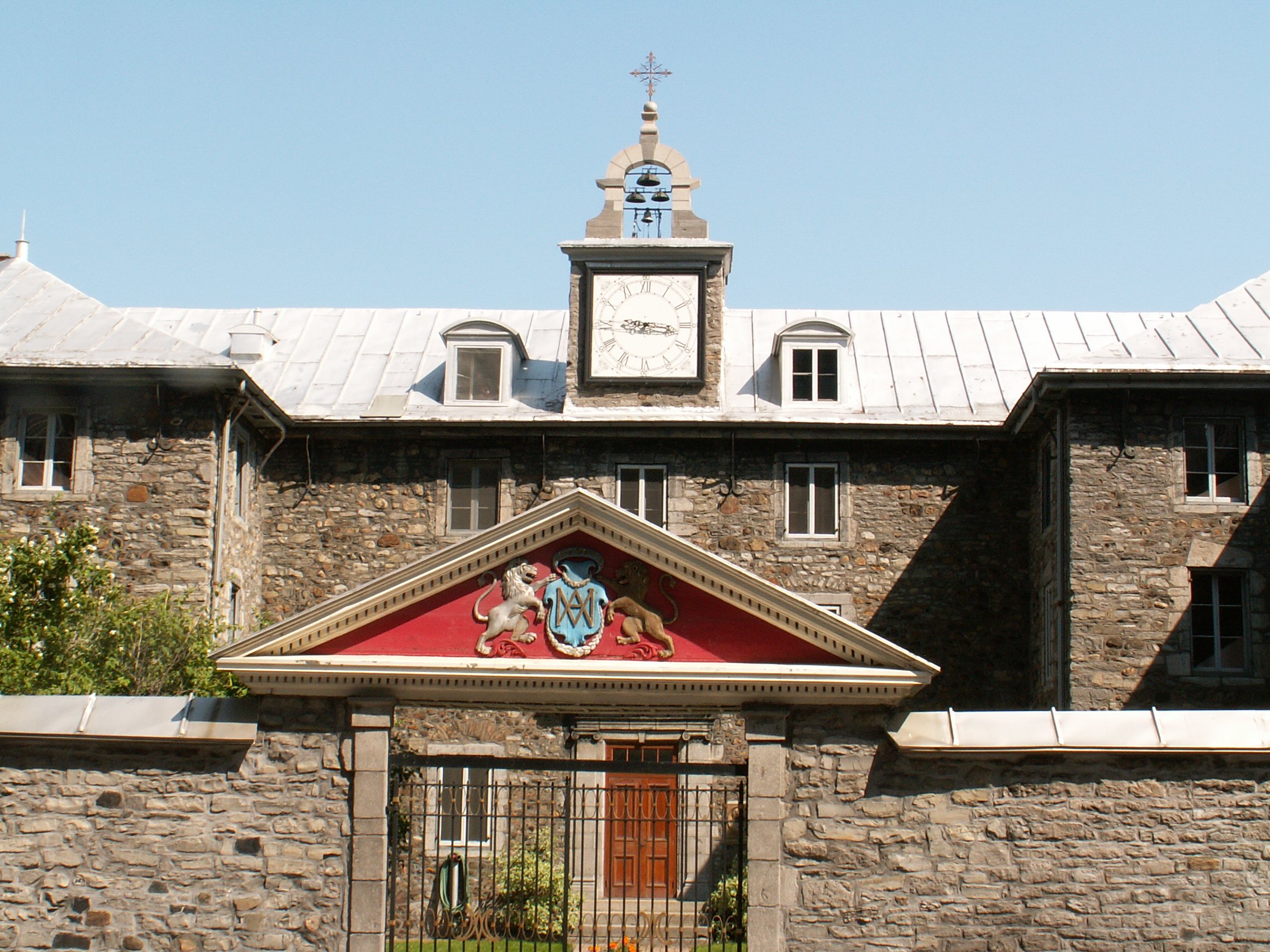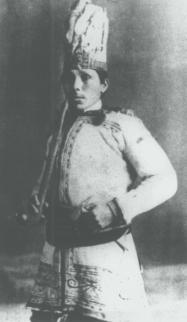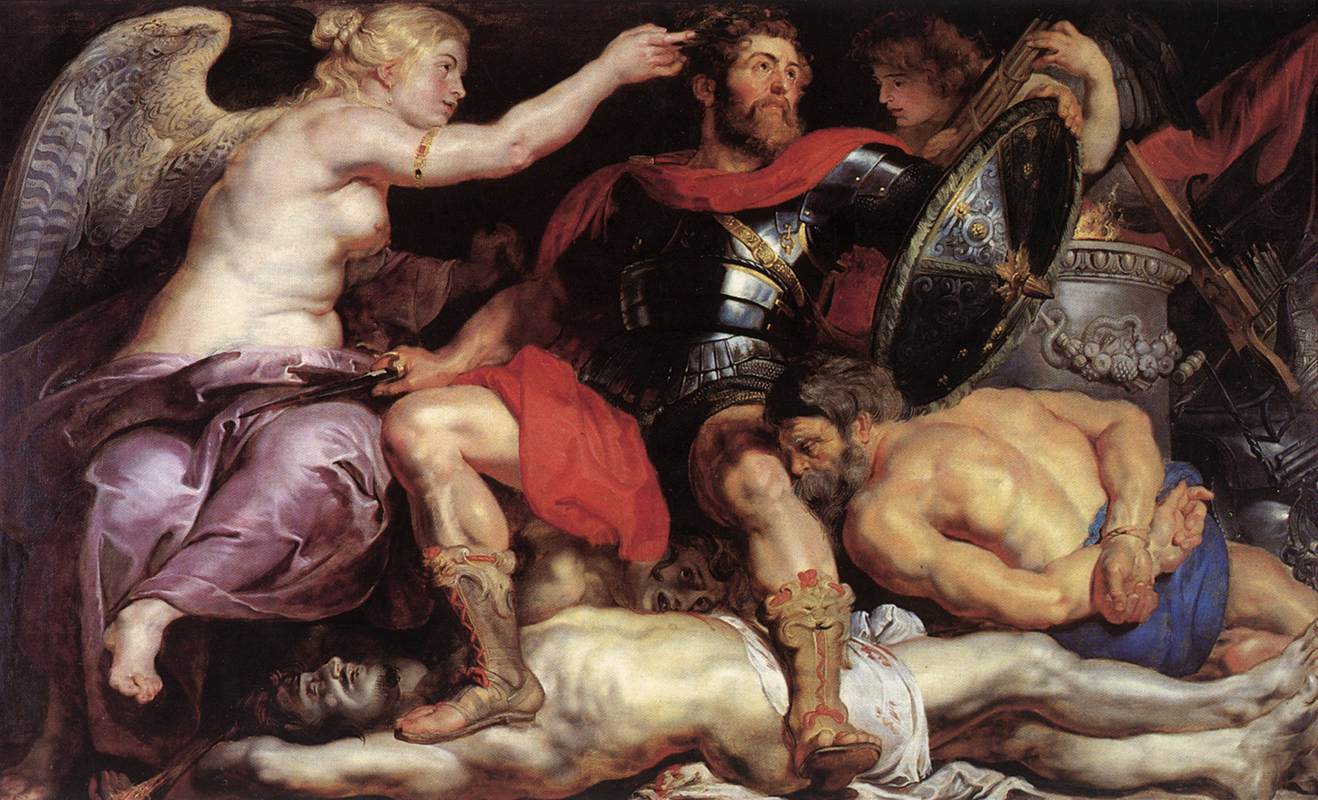|
Sulpicians
The Society of Priests of Saint-Sulpice (french: Compagnie des Prêtres de Saint-Sulpice), abbreviated PSS also known as the Sulpicians is a society of apostolic life of Pontifical Right for men, named after the Church of Saint-Sulpice, Paris, where it was founded. The members of the Society add the nominal letters PSS after their names to indicate membership in the Congregation. Typically, priests become members of the Society of the Priests of St. Sulpice only after ordination and some years of pastoral work. The purpose of the society is mainly the education of priests and to some extent parish work. As their main role is the education of those preparing to become priests, Sulpicians place great emphasis on the academic and spiritual formation of their own members, who commit themselves to undergoing lifelong development in these areas. The Society is divided into three provinces, operating in various countries: the Province of France, Canada, and the United States. In France ... [...More Info...] [...Related Items...] OR: [Wikipedia] [Google] [Baidu] |
Ignace Bourget
Ignace Bourget (October 30, 1799 – June 8, 1885) was a Canadian Roman Catholic priest who held the title of Bishop of Montreal from 1840 to 1876. Born in Lévis, Quebec, in 1799, Bourget entered the clergy at an early age, undertook several courses of religious study, and in 1837 was named co-adjutor bishop of the newly created bishopric of Montreal. Following the death of Jean-Jacques Lartigue in 1840, Bourget became Bishop of Montreal. During the 1840s, Bourget led the expansion of the Roman Catholic Church in Quebec. He encouraged the immigration of European missionary societies, including the Oblates of Mary Immaculate, the Jesuits, the Society of the Sacred Heart and the Good Shepherd Sisters. He also established entirely new religious communities including the Sisters of the Holy Names of Jesus and Mary, Sisters of Saint Anne, Sisters of Providence, and the Institute of Misericordia Sisters. He commissioned the construction of St James Cathedral, known today as Mary, Qu ... [...More Info...] [...Related Items...] OR: [Wikipedia] [Google] [Baidu] |
Gabriel Thubières De Levy De Queylus
Gabriel Thubières de Levy de Queylus, S.S. (1612 – 20 May 1677), was a Sulpician priest from France, who was a leader in the development of New France. He was the founder and first superior of the Seminary of Saint-Sulpice in Montreal. Life Early life De Queylus, as he was known during his life, was born in 1612 in Privezac, in the ancient Province of Rouergue in the Kingdom of France, a son of a wealthy nobleman. Destined for service in the Church, at the age of 11 he was made the commendatory abbot of the Abbey of Loc-Dieu, giving him the lifelong title of abbé. Choosing late in his life to pursue the priesthood, he studied at a seminary in the village of Vaugirard, now the Quartier Saint-Lambert in the 15th arrondissement of Paris. He was ordained a priest on 15 April 1645. In July of that year, he joined the Society of Saint-Sulpice, dedicated to the sound training of a clergy for France and her territories. That same year, independently, he joined the Société Notre ... [...More Info...] [...Related Items...] OR: [Wikipedia] [Google] [Baidu] |
Kanesatake
Kanesatake (''Kanehsatà:ke'' in Mohawk) is a Mohawk (''Kanien'kéha:ka'' in Mohawk) settlement on the shore of the Lake of Two Mountains in southwestern Quebec, Canada, at the confluence of the Ottawa and Saint Lawrence rivers and about west of Montreal. People who reside in ''Kanehsatà:ke'' are referred to as Mohawks of Kanesatake (''Kanehsata'kehró:non'' in Mohawk). As of 2022, the total registered population was 2,751, with a total of about 1,364 persons living on the territory. Both they and the Mohawk of Kahnawake, Quebec (''Kahnawà:ke'' in Mohawk), a reserve located south of the river from Montreal, also control and have hunting and fishing rights to Doncaster 17 Indian Reserve (''Tiowéro:ton'' in Mohawk)."Mohawks of Kanesatake" , ''Aboriginal Communities'', Government of Canada The Mohawk peop ... [...More Info...] [...Related Items...] OR: [Wikipedia] [Google] [Baidu] |
Jean-Jacques Olier
Jean-Jacques Olier, S.S. (20 September 1608 – 2 April 1657) was a French Catholic priest and the founder of the Sulpicians. He also helped to establish the Société Notre-Dame de Montréal, which organized the settlement of a new town called Ville-Marie (now Montreal) in the colony of New France. Early life Olier was born in Paris, but the family moved to Lyon, where his father had become a judge. There he was given a thorough education in the classics at the local Jesuit college (1617–25). He was encouraged to become a priest by Francis de Sales, who predicted his sanctity and great services to the Catholic Church. In preparation for this career, Olier first studied philosophy at the College of Harcourt in Paris, then scholastic theology and patristics at the College of Sorbonne. He preached during this period, by virtue of a benefice which his father had obtained for him. The young student became a man of great ambition; he also frequented fashionable society, w ... [...More Info...] [...Related Items...] OR: [Wikipedia] [Google] [Baidu] |
New France
New France (french: Nouvelle-France) was the area colonized by France in North America, beginning with the exploration of the Gulf of Saint Lawrence by Jacques Cartier in 1534 and ending with the cession of New France to Great Britain and Spain in 1763 under the Treaty of Paris. The vast territory of ''New France'' consisted of five colonies at its peak in 1712, each with its own administration: Canada, the most developed colony, was divided into the districts of Québec, Trois-Rivières, and Montréal; Hudson Bay; Acadie in the northeast; Plaisance on the island of Newfoundland; and Louisiane. It extended from Newfoundland to the Canadian Prairies and from Hudson Bay to the Gulf of Mexico, including all the Great Lakes of North America. In the 16th century, the lands were used primarily to draw from the wealth of natural resources such as furs through trade with the various indigenous peoples. In the seventeenth century, successful settlements began in Acadia and in Quebe ... [...More Info...] [...Related Items...] OR: [Wikipedia] [Google] [Baidu] |
François Vachon De Belmont
François Vachon de Belmont (3 April 1645 – 22 May 1732) was the fifth superior of the Montreal Sulpicians from 1700 to 1731. Vachon de Belmont was born in Burgundy, France to a wealthy family. He moved to Canada and personally funded the construction of La Montagne mission Mission (from Latin ''missio'' "the act of sending out") may refer to: Organised activities Religion *Christian mission, an organized effort to spread Christianity *Mission (LDS Church), an administrative area of The Church of Jesus Christ of ... near Montreal. He authored a manuscript history of New France entitled ''Recueil de pièces sur l’histoire du Canada'', which is currently held at the Bibliothèque nationale de France and known as Français 13516. This manuscript was partially published under the title ''Histoire du Canada'', by the ''Quebec Literary and Historical Society Collections'' in 1840. References External links * * * 1645 births 1732 deaths 18th-century Roman Catholi ... [...More Info...] [...Related Items...] OR: [Wikipedia] [Google] [Baidu] |
Saint-Sulpice Seminary (Montreal)
The Saint-Sulpice Seminary (French:Vieux Séminaire de Saint-Sulpice) is a building in Montreal, Quebec, Canada. It is the second oldest structure in Montreal and was declared a National Historic Site of Canada in 1980. It is located in the Ville-Marie Borough in the Old Montreal district, next to Notre-Dame Basilica on Notre-Dame Street, facing Place d'Armes. The seminary is a classic U-shaped building featuring a palatial style and includes an annex. Saint-Sulpice Seminary was founded in 1657 by the Society of Priests of Saint Sulpice, who have been the sole owner of the building since its creation. Construction began in 1684 by François Dollier de Casson, superior of the Sulpicians, and was completed in 1687, although later additions, such as the clock, were completed by 1713. It was dedicated to the education of secular priests and to mission work among native peoples in New France. Clock The façade of the building is adorned with a clock, constructed and installed in ... [...More Info...] [...Related Items...] OR: [Wikipedia] [Google] [Baidu] |
Fort De La Montagne
The Fort de la Montagne (also called Fort des Messieurs or Fort Belmont) was an old fortification, the remaining structures of which are located on Sherbrooke Street in Montreal, Quebec, Canada. The fort was constructed in 1685 and parts of it were demolished in the mid 19th century. Two high stone towers, built in 1694 as bastions of the fort, still remain and are among the oldest structures on the Island of Montreal. Chapelle du Grand Séminaire', Université du Québec The towers were designated a National Historic Site of Canada in 1970. History The mission to Christianize the native people was established in 1675 at the foot of Mont-Royal mountain. François Vachon de Belmont was sent to New France towards 1680 by his superiors, order of Saint-Sulpice priests in Paris to stop the spread of witchcraft and visions at the mission. In 1683, 210 natives, (Iroquois, Hurons et Algonquins) lived on the site. In order to protect the mission from the Iroquois, a fort was construct ... [...More Info...] [...Related Items...] OR: [Wikipedia] [Google] [Baidu] |
Conquest Of 1760
Conquest is the act of military subjugation of an enemy by force of arms. Military history provides many examples of conquest: the Roman conquest of Britain, the Mauryan conquest of Afghanistan and of vast areas of the Indian subcontinent, the Spanish conquest of the Aztec Empire and various Muslim conquests, to mention just a few. The Norman conquest of England provides an example: it built on cultural ties, led to the subjugation of the Kingdom of England to Norman control and brought William the Conqueror to the English throne in 1066. Conquest may link in some ways with colonialism. England, for example, experienced phases and areas of Anglo-Saxon, Viking and Franco-Norman colonisation and conquest. Methods of conquest The Ottomans used a method of gradual, non-military conquest in which they established suzerainty over their neighbours and then displaced their ruling dynasties. This concept was first systematized by Halil İnalcık. Conquests of this sort did no ... [...More Info...] [...Related Items...] OR: [Wikipedia] [Google] [Baidu] |
French Revolution
The French Revolution ( ) was a period of radical political and societal change in France that began with the Estates General of 1789 and ended with the formation of the French Consulate in November 1799. Many of its ideas are considered fundamental principles of liberal democracy, while phrases like ''liberté, égalité, fraternité'' reappeared in other revolts, such as the 1917 Russian Revolution, and inspired campaigns for the abolition of slavery and universal suffrage. The values and institutions it created dominate French politics to this day. Its causes are generally agreed to be a combination of social, political and economic factors, which the ''Ancien Régime'' proved unable to manage. In May 1789, widespread social distress led to the convocation of the Estates General, which was converted into a National Assembly in June. Continuing unrest culminated in the Storming of the Bastille on 14 July, which led to a series of radical measures by the Assembly, i ... [...More Info...] [...Related Items...] OR: [Wikipedia] [Google] [Baidu] |
Roman Catholic Church
The Catholic Church, also known as the Roman Catholic Church, is the largest Christian church, with 1.3 billion baptized Catholics worldwide . It is among the world's oldest and largest international institutions, and has played a prominent role in the history and development of Western civilization.O'Collins, p. v (preface). The church consists of 24 ''sui iuris'' churches, including the Latin Church and 23 Eastern Catholic Churches, which comprise almost 3,500 dioceses and eparchies located around the world. The pope, who is the bishop of Rome, is the chief pastor of the church. The bishopric of Rome, known as the Holy See, is the central governing authority of the church. The administrative body of the Holy See, the Roman Curia, has its principal offices in Vatican City, a small enclave of the Italian city of Rome, of which the pope is head of state. The core beliefs of Catholicism are found in the Nicene Creed. The Catholic Church teaches that it is th ... [...More Info...] [...Related Items...] OR: [Wikipedia] [Google] [Baidu] |
National Convention
The National Convention (french: link=no, Convention nationale) was the parliament of the Kingdom of France for one day and the French First Republic for the rest of its existence during the French Revolution, following the two-year National Constituent Assembly and the one-year Legislative Assembly. Created after the great insurrection of 10 August 1792, it was the first French government organized as a republic, abandoning the monarchy altogether. The Convention sat as a single-chamber assembly from 20 September 1792 to 26 October 1795 (4 Brumaire IV under the Convention's adopted calendar). The Convention came about when the Legislative Assembly decreed the provisional suspension of King Louis XVI and the convocation of a National Convention to draw up a new constitution with no monarchy. The other major innovation was to decree that deputies to that Convention should be elected by all Frenchmen twenty-one years old or more, domiciled for a year and living by the produc ... [...More Info...] [...Related Items...] OR: [Wikipedia] [Google] [Baidu] |





.jpg)
